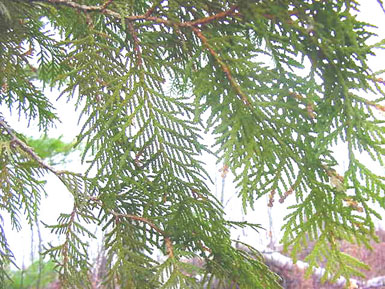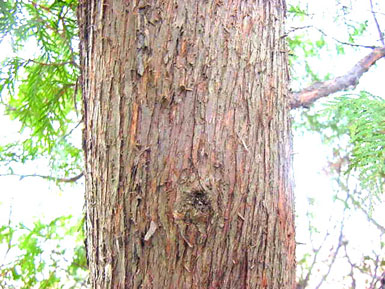Form: This species has an angled, buttressed, and branched trunk. It has a conical shape when young, but develops an irregular crown and the bole tapers rapidly. It has a shallow root system.
Needles:
Arrangement: scales opposite in 4 rows
Length: 1/16-1/8" long
Shape: scale-like; side pair keeled
Other: yellow-green in color

Bark: It has very thin, fibrous & shreddy bark that is fissured into narrow connecting ridges and has light-red-brown color.

Cones: It has oblong cones that are typically 3/8 in. long.
Distinguishing characteristics: It grows in a distinctly different range from Atlantic white cedar. When you only have the needles look for it's brighter green color. It does not have the blue tint typical of Atlantic white cedar.
Range: This is a common boreal forest species. In the United States, it is common in the Lake States, upstate New York and Maine, but disjunct populations also exist in the southern Appalachians.
Silvics: This species is adapted to swamps and/or soils with a high limestone content. It is often found in pure stands.
Ecological and cultural importance: Deer virtually eliminate regeneration by heavily browsing young seedlings. Mature stands provide excellent winter cover for wildlife. The wood is very valuable for log home construction.